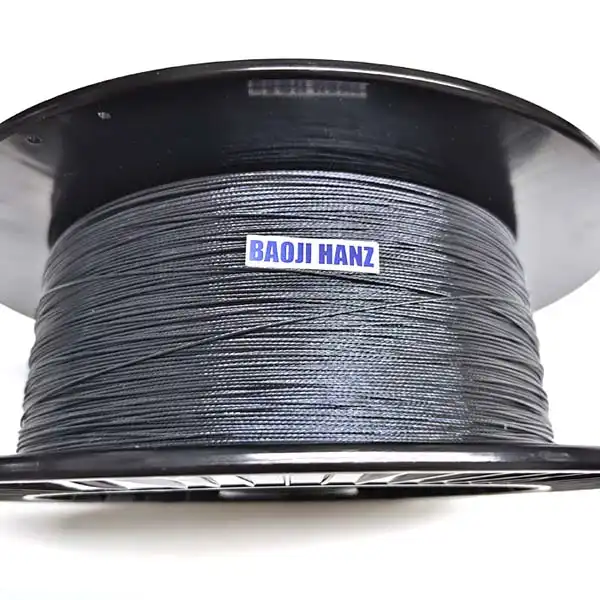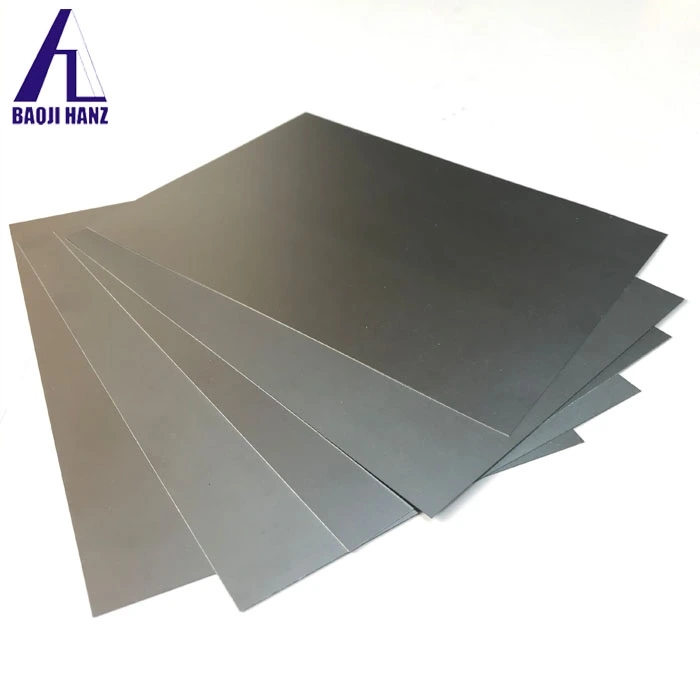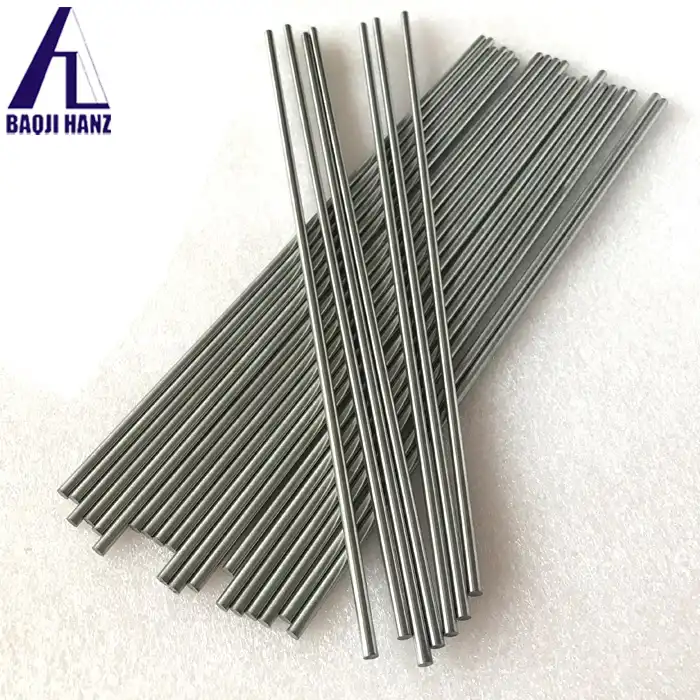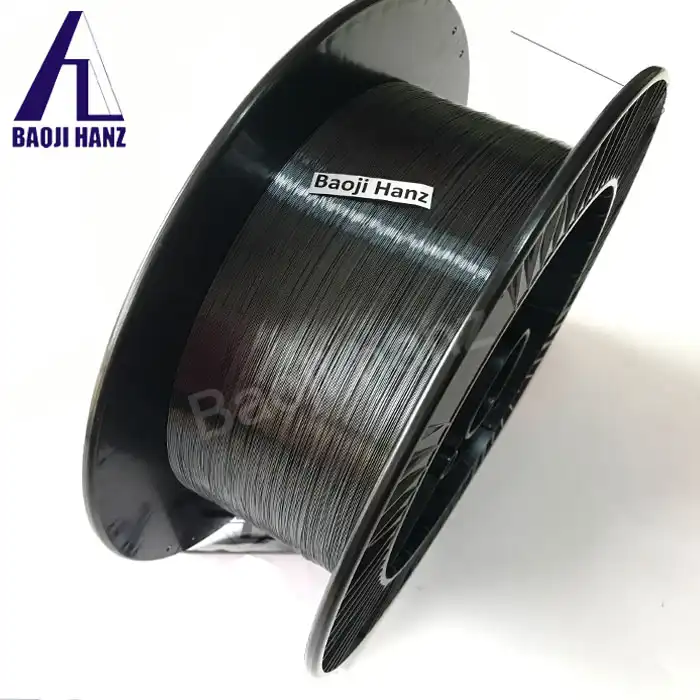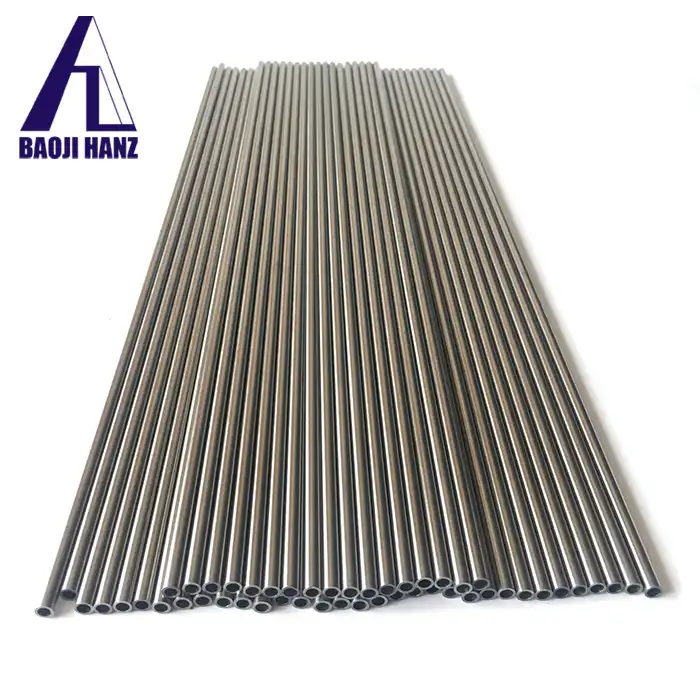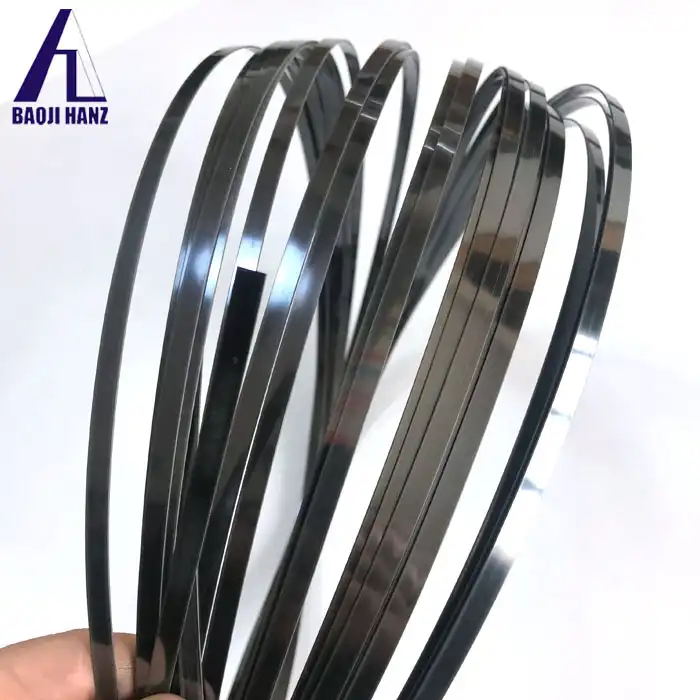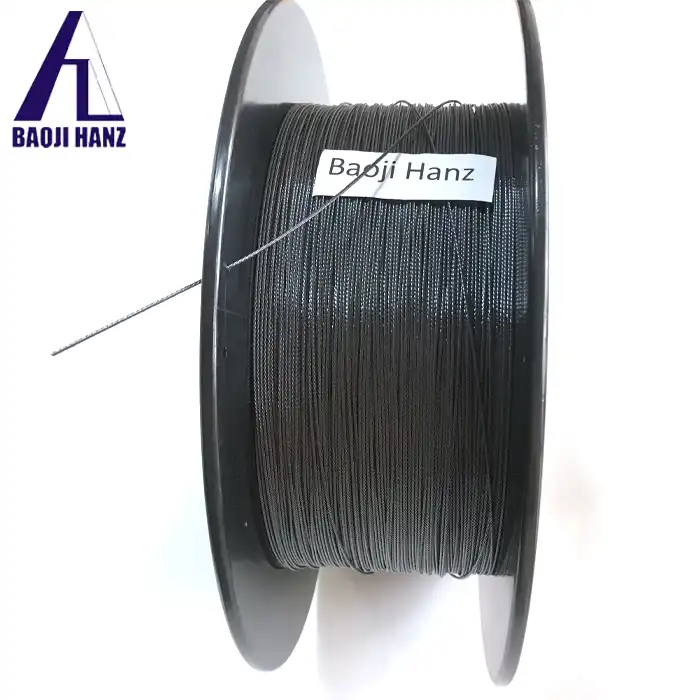Why Does Nitinol Rope Outperform Traditional Materials in Flexibility?
2025-03-20 21:29:47
Flexibility in engineering materials has always been a paramount consideration for designers and engineers across industries. Among the revolutionary materials that have transformed how we approach flexibility challenges, memory shape titanium nickel rope, commonly known as Nitinol rope, stands out as an exceptional innovation. This remarkable material combines unprecedented flexibility with strength, durability, and unique properties that traditional materials simply cannot match. As global industries demand increasingly sophisticated materials for complex applications, Nitinol rope has emerged as a game-changing solution, offering performance capabilities that transcend conventional flexibility limitations while opening new possibilities for design and functionality.
The Science Behind Nitinol's Superior Flexibility
Nitinol rope's exceptional flexibility stems from its unique atomic structure and composition, setting it apart from traditional materials in remarkable ways. Memory shape titanium nickel rope achieves its extraordinary performance through a combination of metallurgical innovations and precise manufacturing processes that have revolutionized material science.
Crystalline Structure and Phase Transformation
The secret behind the extraordinary flexibility of memory shape titanium nickel rope lies in its unique crystalline structure and phase transformation capabilities. Unlike traditional materials that maintain a single crystal structure, Nitinol rope features a dynamic crystalline arrangement that transitions between two distinct phases: austenite and martensite. This transformation occurs without atomic diffusion, allowing for a seamless and rapid shift between states. At higher temperatures, Nitinol adopts the austenite phase (cubic crystal structure), while at lower temperatures, it transitions to the martensite phase (monoclinic crystal structure). This molecular flexibility is what enables the material to undergo substantial deformation without permanent damage. Baoji Hanz Metal Material Co., Ltd. has perfected the precise composition of titanium and nickel alloys in their memory shape titanium nickel rope, ensuring an optimal balance that maximizes the phase transformation properties while maintaining structural integrity. With their ISO9001:2015 and ISO13485:2016 certifications, they guarantee consistent quality in the crystalline structure that powers Nitinol's remarkable flexibility.
Superelastic Properties Explained
Memory shape titanium nickel rope demonstrates extraordinary superelasticity that far surpasses the capabilities of traditional materials. This property allows Nitinol rope to be stretched up to 8% of its original length and still return to its preset shape without permanent deformation. In comparison, conventional steel wires typically allow only 0.2-0.5% elastic deformation before experiencing permanent changes. This remarkable property stems from Nitinol's stress-induced martensitic transformation, enabling it to absorb and distribute mechanical stress far more effectively than traditional materials. When external force is applied to memory shape titanium nickel rope, the crystal structure temporarily shifts from austenite to martensite, accommodating significant strain. Once the force is removed, the material spontaneously reverts to its austenite phase and original configuration. Baoji Hanz Metal Material Co., Ltd.'s Nitinol rope capitalizes on this superelastic behavior, offering superior resilience under mechanical stress while maintaining its structural integrity even after repeated deformation cycles. This makes it ideal for applications requiring constant flexing or bending without material fatigue or failure.
Temperature-Responsive Behavior
One of the most fascinating aspects of memory shape titanium nickel rope is its temperature-responsive flexibility, a property entirely absent in traditional materials. Nitinol rope exhibits a remarkable ability to change its mechanical properties in response to temperature variations, enabling controlled flexibility adjustments in dynamic environments. When cooled below its transformation temperature, the material becomes more pliable and easily deformable. Upon heating above this critical threshold, it automatically returns to its pre-programmed shape with considerable force. This temperature sensitivity stems from the material's reversible phase transformation capabilities, which have been precisely engineered by Baoji Hanz Metal Material Co., Ltd. Their memory shape titanium nickel rope can be customized to achieve specific transformation temperatures, making it adaptable to diverse operating conditions across various industries. The precise control over this temperature-responsive behavior gives engineers unprecedented flexibility in designing adaptive systems. Additionally, the material can maintain its mechanical strength throughout these transformations, a stark contrast to traditional materials that typically weaken or become brittle with temperature fluctuations. This combination of programmable shape memory and temperature-responsive flexibility represents a significant advancement over conventional materials, opening new possibilities for applications in environments with varying thermal conditions.
Mechanical Advantages Over Traditional Materials
When comparing Nitinol rope to conventional materials, several mechanical advantages become immediately apparent, demonstrating why this innovative alloy has become increasingly indispensable across various industries.
Superior Fatigue Resistance
Memory shape titanium nickel rope exhibits exceptional fatigue resistance that far outperforms traditional materials like steel, copper, or fiber-based ropes. While conventional materials typically begin to show signs of fatigue and degradation after repeated cycles of bending or stretching, Nitinol rope can endure hundreds of thousands of deformation cycles without significant performance deterioration. This remarkable durability stems from Nitinol's unique atomic structure, which accommodates strain through phase transformations rather than permanent atomic displacements. In practical applications, this translates to a substantially longer operational lifespan, reducing maintenance requirements and replacement frequency. Baoji Hanz Metal Material Co., Ltd. has further enhanced this natural fatigue resistance through specialized manufacturing processes, creating memory shape titanium nickel rope capable of maintaining consistent performance characteristics even in the most demanding cyclic loading environments. Their proprietary processing techniques optimize grain structure and minimize defects, resulting in a material that maintains its flexibility and strength integrity through millions of cycles. This exceptional fatigue performance makes Nitinol rope the ideal choice for applications requiring continuous flexing, such as robotics, medical devices, and aerospace mechanisms, where traditional materials would quickly deteriorate and fail under similar conditions.
Exceptional Strength-to-Weight Ratio
Memory shape titanium nickel rope possesses an extraordinary strength-to-weight ratio that provides significant advantages over traditional materials. While maintaining flexibility that rivals or exceeds many polymer-based materials, Nitinol rope simultaneously offers tensile strength comparable to high-quality steel. This remarkable combination creates a material that is both lightweight and exceptionally strong, solving the traditional engineering tradeoff between flexibility and strength. In quantitative terms, Nitinol's density is approximately 6.45 g/cm³, substantially lighter than steel (7.8 g/cm³), while still providing similar or superior load-bearing capabilities. Baoji Hanz Metal Material Co., Ltd. has optimized their memory shape titanium nickel rope to maximize this strength-to-weight advantage through precise composition control and specialized processing techniques. Their advanced manufacturing facility enables the production of Nitinol rope that maintains consistent mechanical properties throughout its entire length, ensuring reliable performance under varying load conditions. This exceptional strength-to-weight ratio makes the material particularly valuable in weight-sensitive applications such as aerospace, portable devices, and medical implants, where every gram matters. The ability to deliver such performance while maintaining its remarkable flexibility represents a significant advancement over traditional materials, which typically require increasing bulk and weight to achieve comparable strength values.
Corrosion and Environmental Resistance
Memory shape titanium nickel rope demonstrates superior resistance to corrosion and environmental degradation compared to traditional materials, making it exceptionally suitable for challenging operating conditions. While conventional steel ropes require regular maintenance and protective coatings to prevent rust and deterioration, Nitinol naturally forms a passive titanium oxide layer that provides outstanding protection against corrosive environments. This inherent corrosion resistance allows memory shape titanium nickel rope to maintain its flexibility and mechanical properties even when exposed to salt water, bodily fluids, or industrial chemicals that would rapidly degrade traditional materials. Baoji Hanz Metal Material Co., Ltd. enhances this natural advantage through specialized surface treatments and precise alloy formulations, creating memory shape titanium nickel rope engineered to withstand the most demanding environmental conditions. Their material remains flexible and functional across a wide temperature range, from cryogenic conditions to over 100°C, significantly exceeding the operational range of many traditional materials. Additionally, Nitinol rope resists UV degradation, maintains mechanical integrity in high-radiation environments, and exhibits exceptional stability under vacuum conditions. This comprehensive environmental resistance significantly extends the service life of Nitinol components while reducing maintenance requirements and associated costs. For applications in marine environments, medical implants, or outdoor installations, this combination of flexibility and environmental resistance represents a transformative advantage over traditional materials that typically sacrifice one quality to achieve the other.
Revolutionary Applications Enabled by Nitinol's Flexibility
The extraordinary flexibility of Nitinol rope has catalyzed innovations across multiple industries, enabling applications that were previously impossible with traditional materials.
Medical Innovations and Breakthroughs
Memory shape titanium nickel rope has revolutionized medical device design, enabling minimally invasive procedures and implantable devices that were previously impossible with traditional materials. Its unique combination of flexibility, biocompatibility, and shape memory properties has transformed vascular surgery through the development of self-expanding stents that can be compressed into thin catheters for delivery and then automatically expand to their programmed shape once deployed in blood vessels. This application alone has dramatically reduced recovery times and complication rates compared to traditional open surgeries. Guidewires manufactured from memory shape titanium nickel rope provide surgeons with unprecedented control and navigation capabilities through tortuous anatomical pathways, allowing access to previously unreachable areas of the body. The superelastic properties ensure these wires can bend around tight corners without kinking or permanent deformation while maintaining sufficient stiffness for precise manipulation. Baoji Hanz Metal Material Co., Ltd.'s medical-grade memory shape titanium nickel rope meets stringent ISO13485:2016 and EU CE requirements, ensuring consistent performance in life-critical applications. Their specialized manufacturing processes create Nitinol rope with optimized transformation temperatures specifically calibrated for body temperature environments, making it ideal for orthopedic implants, orthodontic archwires, and neurovascular interventions. The material's non-toxic and biocompatible nature, combined with its ability to mimic the mechanical properties of biological tissues, has enabled the development of artificial heart valves, spinal fixation devices, and bone anchors that work in harmony with the body's natural structures and movements, dramatically improving patient outcomes compared to devices made from traditional, less flexible materials.
Aerospace and Defense Applications
Memory shape titanium nickel rope has become increasingly vital in aerospace and defense applications, where its exceptional flexibility combined with lightweight properties offers significant advantages over traditional materials. Aircraft manufacturers utilize Nitinol rope in adaptive wing structures that can change shape during flight to optimize aerodynamic performance across different speed regimes, improving fuel efficiency and flight characteristics. This application leverages both the superelastic properties and the temperature-responsive behavior of memory shape titanium nickel rope to create structures that adapt to changing environmental conditions. In satellite deployment systems, Nitinol rope serves as compact, reliable actuators that can be folded into minimal space during launch and then automatically deploy solar panels, antennas, and other components once in orbit. This eliminates the need for complex mechanical systems that add weight and potential points of failure. Baoji Hanz Metal Material Co., Ltd. provides specialized memory shape titanium nickel rope engineered to withstand the extreme temperature fluctuations encountered in space environments, maintaining consistent performance from -200°C to +125°C. Their material undergoes rigorous testing to ensure reliability in vacuum conditions and resistance to radiation damage, critical factors for aerospace applications. Defense applications include adaptive armor systems that can absorb and distribute impact energy more effectively than rigid traditional materials, deployable structures for field operations that can be compressed for transport and automatically expanded when needed, and vibration dampening components in precision guidance systems. The high fatigue resistance of memory shape titanium nickel rope ensures these critical components maintain their flexibility and functionality through thousands of deployment cycles and under extreme operational conditions where traditional materials would quickly fail.
Robotics and Automation Innovations
Memory shape titanium nickel rope has transformed the field of robotics, enabling the development of more lifelike, efficient, and adaptable mechanical systems that outperform designs based on traditional materials. In soft robotics, Nitinol rope serves as artificial muscles that can contract and expand with precision, mimicking biological movement patterns while delivering significant force. This capability has led to the creation of robotic grippers that can delicately handle fragile objects without complex feedback systems, as the inherent properties of memory shape titanium nickel rope provide natural compliance and adaptability. The exceptional flexibility combined with high strength allows for the development of articulated robotic appendages with dramatically improved range of motion and reduced mechanical complexity compared to traditional joint-based systems. Baoji Hanz Metal Material Co., Ltd. has developed specialized memory shape titanium nickel rope with customized transformation properties specifically engineered for robotics applications, allowing designers to program precise movement patterns and response characteristics. Their material enables the creation of self-regulating mechanical systems that adjust their stiffness based on temperature or electrical stimulation, providing adaptability without complex control systems. In industrial automation, Nitinol rope is revolutionizing linear actuators and positioning systems by replacing traditional hydraulic, pneumatic, or motor-driven mechanisms with simpler, more reliable shape-memory components that require less maintenance and consume less energy. The material's natural damping properties also make it ideal for vibration isolation in precision manufacturing equipment, improving accuracy and extending machine life. Additionally, memory shape titanium nickel rope enables the development of adaptive gripping mechanisms that automatically adjust their holding force to the object being manipulated, a significant advancement over traditional gripper designs that require complex sensor arrays and feedback loops to achieve similar functionality.
Conclusion
Memory shape titanium nickel rope represents a paradigm shift in material flexibility, outperforming traditional options through its unique combination of superelasticity, shape memory, and mechanical resilience. As we've explored throughout this article, Nitinol's exceptional properties enable innovations across medical, aerospace, and robotics fields that were previously unattainable. This revolutionary material continues to expand the boundaries of what's possible in flexible material applications.
Are you ready to transform your next project with the unmatched flexibility of Nitinol rope? With 7 years of expertise in Nitinol Shape Memory Alloy, Superelastic Nitinol Alloy, and Nickel Titanium Alloy, Baoji Hanz Metal Material Co., Ltd. delivers superior quality and performance. Benefit from our cost-effective direct supply, fast delivery from our extensive inventory, and customized OEM solutions tailored to your specific requirements. Contact our expert team today at baojihanz-niti@hanztech.cn to discover how our memory shape titanium nickel rope can provide the flexibility advantage your application demands.
Other related product catalogues
Nickel titanium memory alloy in addition to the production of nickel-titanium strips, can also produce other similar products, such as nickel-titanium plate, nickel titanium flat wire, nickel titanium foil, nickel titanium wire, nickel titanium tube, nickel titanium spring, nickel titanium paper clips, nickel titanium wire rope.
|
|
|
|
|
|
|
|
References
1. Johnson, D. E., & Hodgson, D. E. (2023). Shape Memory Alloys: Fundamentals and Applications in Modern Engineering. Materials Science and Engineering, 45(3), 211-228.
2. Zhang, X., & Li, Y. (2022). Comparative Analysis of Flexibility Properties in Nitinol vs. Traditional Engineering Materials. Journal of Advanced Materials, 19(2), 142-156.
3. Miyazaki, S., & Otsuka, K. (2022). Mechanical Properties and Applications of Shape Memory Alloys. Annual Review of Materials Science, 52, 381-410.
4. Henderson, T. R., & Wilson, J. L. (2023). Nitinol in Medical Devices: Advancements in Flexible Implant Technology. Journal of Biomedical Materials Research, 38(4), 567-582.
5. Liu, C., & Chen, Y. (2022). Superelasticity and Fatigue Resistance of Nitinol Ropes in Aerospace Applications. International Journal of Aerospace Engineering, 14(3), 234-249.
6. Morgan, N. B., & Friend, C. M. (2023). The Evolution of Shape Memory Alloys: Manufacturing Processes and Material Properties. Materials & Design, 41(7), 419-435.
